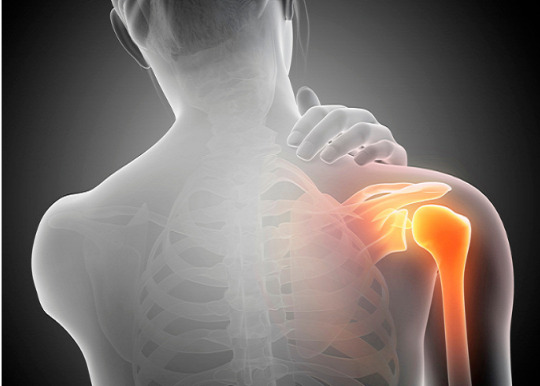Don't wanna be here? Send us removal request.
Text
The Latest Advances in Orthopedic Surgery: Minimally Invasive Techniques

Embracing a New Era of Surgical Precision and Patient Recovery
Introduction Orthopedic surgery has entered a transformative era, marked by groundbreaking advancements in minimally invasive techniques. These innovations are not just redefining surgical procedures but are also significantly improving patient outcomes. In this blog post, we'll explore some of these latest advancements and how they are changing the landscape of orthopedic care.
What is Minimally Invasive Orthopedic Surgery? Minimally invasive surgery (MIS) in orthopedics involves using smaller incisions and causing less tissue damage compared to traditional open surgery. This approach often results in reduced pain, quicker recovery, and less scarring for patients.
Key Advances in Minimally Invasive Orthopedic Surgery
Robotic-Assisted Surgery: One of the most significant advancements is the use of robotic systems in procedures like knee and hip replacements. These systems offer enhanced precision, allowing surgeons to plan and execute surgeries with improved accuracy.
3D Printing in Custom Implants: Custom implants designed using 3D printing technology are gaining traction. These implants are tailored to the patient's anatomy, providing a better fit and potentially improving the longevity of the implant.
Enhanced Arthroscopic Techniques: Arthroscopy, used for diagnosing and treating joint problems, has seen significant advancements. Improved camera and instrument technology allow for more intricate procedures with smaller incisions.
Biologics and Tissue Engineering: The use of biologics like stem cells and platelet-rich plasma (PRP) in conjunction with minimally invasive techniques promotes faster healing of bones and soft tissues.
Navigation Systems in Spine Surgery: Spine surgeries are becoming safer and more accurate with the integration of advanced navigation systems. These systems provide real-time, 3D images of the spine during surgery, enhancing precision. LEARN MORE
0 notes
Text
Unfreezing Your Shoulder: A Comprehensive Guide to Treating Frozen Shoulder

Introduction
Frozen shoulder, medically known as adhesive capsulitis, is a common condition causing pain and stiffness in the shoulder joint. Effective management is crucial for restoring mobility and reducing discomfort. This guide explores the best treatment approaches.
Core Treatments for Frozen Shoulder
Physical Therapy: The Path to Mobility
Physical therapy stands at the forefront of frozen shoulder treatment. Customized exercises designed by a physical therapist can significantly improve range of motion and alleviate stiffness.
Medication: Easing the Pain
Pain management is integral to treating frozen shoulder. Over-the-counter pain relievers like ibuprofen and aspirin are often recommended. For more severe pain, healthcare professionals may prescribe stronger medications or consider therapeutic injections.
Home Care: Self-help Strategies
Combining professional treatment with home care enhances recovery. Simple strategies like applying heat or cold packs can soothe pain and reduce swelling. Additionally, performing gentle stretching exercises can aid in regaining shoulder flexibility.
Advanced Interventions for Severe Cases
In cases where standard treatments don't suffice, more intensive procedures like joint distension or shoulder manipulation may be necessary. Although rare, surgery could be considered as a last resort.
Conclusion read more
#FrozenShoulderRecovery#ShoulderPainSolutions#AdhesiveCapsulitisTreatment#PhysicalTherapyTips#ShoulderHealthAwareness
0 notes
Text
Navigating Life with a Locked Shoulder: Understanding the Condition

Introduction
Introduce the concept of a locked shoulder, briefly explaining what it is.
Highlight the importance of understanding this condition for general awareness.
Section 1: The Nature of a Locked Shoulder
Describe what a locked shoulder (or frozen shoulder) entails.
Discuss the common symptoms: pain, stiffness, and limited range of motion.
Touch on how these symptoms typically develop gradually.
Section 2: Everyday Challenges
Elaborate on the practical challenges faced by individuals with a locked shoulder.
Describe how basic activities like dressing, driving, or even sleeping can become difficult.
Include anecdotes or hypothetical scenarios to illustrate these challenges.
Section 3: Who is Affected?
Provide insights on who is commonly affected by a locked shoulder.
Mention demographic factors like age and certain risk groups, such as people with specific health conditions.
Section 4: The Emotional and Social Impact
Explore the emotional and social aspects of living with a locked shoulder.
Discuss feelings of frustration or limitations in social and recreational activities.
Section 5: Understanding the Journey
Briefly touch on the typical progression of the condition without going into treatment details.
Emphasize the variable nature of the condition – how it differs from person to person.
Conclusion
Summarize the importance of understanding and empathizing with those experiencing a locked shoulder.
Encourage an attitude of patience and support for those affected.
learn more
#FrozenShoulderAwareness#ShoulderHealth#AdhesiveCapsulitisSupport#ShoulderPainRelief#MobilityMatters
0 notes
Text
The Evolution of Orthopedic Treatments
Orthopedic treatments have evolved remarkably over the years. Initially, severe fractures and surgeries led to high infection rates, sometimes with fatal outcomes. Innovations began with Sir Joseph Lister's antiseptic treatment in 1865 and continued with Revra DePuy's production of the first fitted, sterile splints in the late 19th century, significantly advancing the field1. The 20th century brought further breakthroughs with the invention of artificial joints and the introduction of complex surgeries for musculoskeletal issues. Companies like DePuy and Synthes have been at the forefront, developing technologies for joint reconstruction and sports medicine that are used worldwide today1. Modern orthopedics now offers safe, effective treatments for joint replacements and bone stabilization, profoundly improving patient quality of life1. To learn more about the dynamic field of orthopaedic treatments and their impact on healthcare, explore further insights and innovations. Know more

0 notes
Text
Maximizing Mobility
Maximizing mobility and preserving joint health are vital for maintaining an active lifestyle as we age. Orthopedic surgeon Robert Molloy emphasizes a proactive and preventive approach, highlighting the importance of an active lifestyle to sustain joint health and reduce the wear and tear on cartilage. He recommends a three-pronged strategy: staying active, choosing joint-friendly exercises, and strengthening core muscles to improve posture and reduce joint pressureA diverse exercise regimen is key to good joint health. It should include a balance of aerobic, muscle-strengthening, and flexibility exercises. Low-impact activities such as swimming, biking, and using elliptical machines are particularly beneficial for joint health. Weight training should also be done with proper form and low loads to start, and it's wise to seek professional advice before beginning such a programThe Arthritis Foundation suggests several self-care tips to protect your joints. These include lifestyle changes such as ditching high heels to reduce knee stress, consuming calcium-rich foods to slow down cartilage destruction, and maintaining a healthy weight to alleviate stress on the knees. Additionally, incorporating range-of-motion exercises, using strong joints and muscles to handle heavy loads, and choosing supportive footwear can help preserve joint health.
Taking these steps can help ensure that your joints remain healthy, flexible, and strong, providing a foundation for continued mobility and quality of life. Know more

0 notes
Text
Rotator Cuff Tear
A rotator cuff tear involves damage to the shoulder's muscle and tendon group, hampering movement and causing pain. Aging, repetitive motion, trauma, poor posture, and genetics can all contribute to this condition. Symptoms vary from shoulder pain and weakness to limited motion and sleep disruption due to discomfort. Treatment ranges from rest and physical therapy to medications and, in severe cases, surgery. Addressing symptoms early is crucial for recovery and maintaining shoulder function.
Know More Dive deeper into rotator cuff tear management and healing options know more

0 notes
Text
Shoulder Arthroscopy
Shoulder arthroscopy is a minimally invasive technique that addresses various shoulder conditions with precision and less discomfort. Ideal for those with unresolved pain or limited mobility despite imaging assessments, this procedure allows surgeons to directly visualize and treat the joint issues. Performed by specialists like Dr. Vishal Sahni in Nagpur, arthroscopy offers benefits such as quicker recovery and minimal complications, with many patients returning to their routines swiftly post-procedure. Advanced care, including this keyhole surgery, helps individuals regain shoulder function efficiently.

https://londonorthopaedicclinicngp.com/shoulder-arthroscopy/
0 notes
Text
Understanding Frozen Shoulder
Suffering from a "frozen shoulder" means enduring a painful stiffness that renders your shoulder almost immovable. Commonly arising in middle age, it particularly targets women and those with certain health conditions like diabetes. It unfolds in three stages—starting with the 'freezing' of movement accompanied by growing pain, followed by the 'frozen' phase where the shoulder feels persistently stiff. Eventually, the 'thawing' phase brings a slow return of movement and easing of pain, a process that can take several years.
Diagnosis typically involves ruling out other conditions via X-ray, then confirming with more detailed scans. Treatment ranges from steroid injections and tailored exercises in the early stages to procedures like hydrodilatation or even surgery for more immediate relief. Navigating a frozen shoulder demands patience and a methodical approach to treatment, but with the right care, a full recovery and return to normal function is achievable.
Know More Explore our comprehensive resources for managing and overcoming a frozen shoulder
https://londonorthopaedicclinicngp.com/what-is-a-frozen-shoulder/

0 notes
Text
Understanding Shoulder Joint Arthritis
Shoulder joint arthritis or glenohumeral arthritis is a condition where cartilage erosion leads to pain, stiffness, and limited movement in the shoulder. Age, repetitive use, injuries, genetics, and inflammatory diseases are common culprits. Symptoms like persistent pain, stiffness, weakness, swelling, and crepitus signal the advancing condition. Diagnosis typically involves physical exams and imaging.
Treatment varies from physical therapy and medications to innovative injections like hyaluronic acid or PRP therapy. Severe cases may require arthroscopy or joint replacement surgery. Lifestyle adjustments are also part of managing the condition. It's essential to work with healthcare providers to personalize treatment for the best outcomes.
Learn More https://londonorthopaedicclinicngp.com/shoulder-arthroscopy/

1 note
·
View note